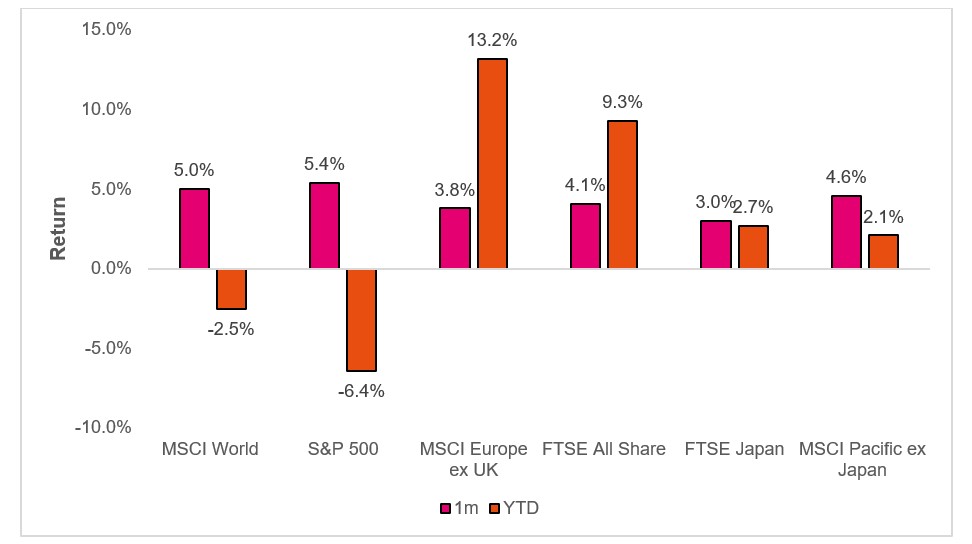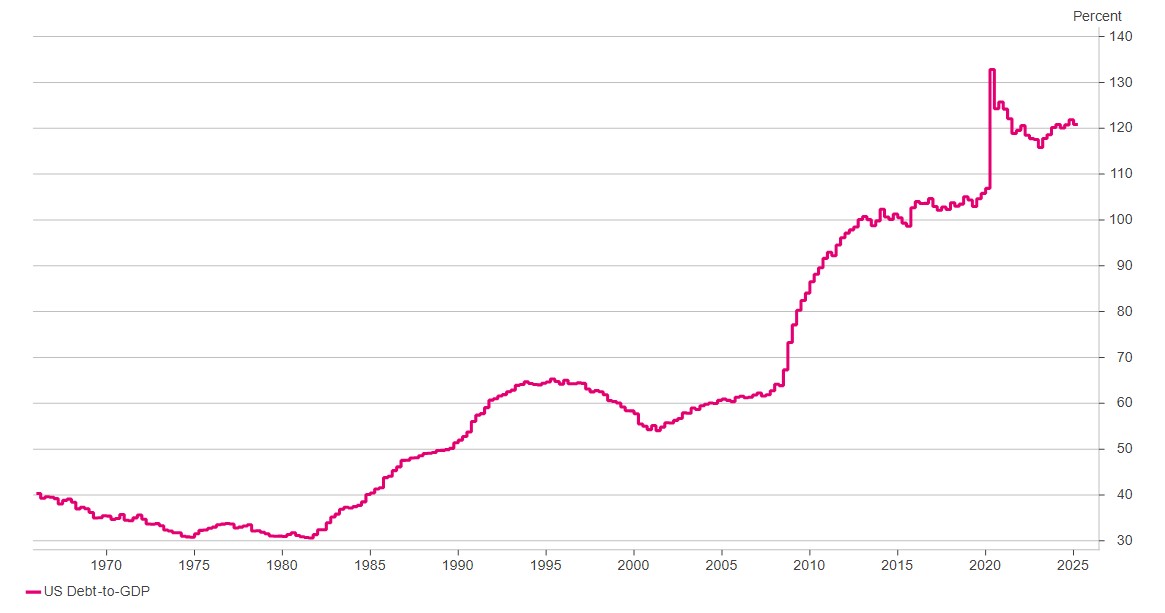Gold loses some sparkle as global equities continue to shine
Continued enthusiasm around Artificial Intelligence (AI), coupled with news of a trade agreement between the US and China under which the US reduced tariffs and Beijing eased restrictions on rare earth exports, helped drive global equities higher for the second consecutive month in October.
Arrange your free initial consultation
Equity Markets
Developed market equities led the gains, with US stocks rising 4.9% in sterling terms as large-cap companies once again outperformed mid-caps. This highlights the growing concentration and dependence on a handful of AI-related companies, with the index up 11% year to date, but a more modest 3% when those firms are excluded (see Figure 1).

Figure 1. US Equities vs US Equity ex AI companies (Source: Pacific Asset Management, October 2025).
Outside the US, Japan was the standout performer, with equities rallying over 5% as the market benefited from enthusiasm around AI and the appointment of Sanae Takaichi - the country’s first female prime minister. Her policy stance, aligned with Abenomics (named after former Japanese Prime Minister, Shinzo Abe), led investors to price in further fiscal expansion and a weaker yen, which supported Japan’s exporters. Meanwhile, UK equities rose 3.7%, aided by a softer sterling that boosted overseas earnings for exporters, whilst commodity and mining stocks advanced on the back of higher commodity prices, particularly in precious metals.

Figure 2. Regional equity returns (Source: Pacific Asset Management, October 2025).
Fixed Income
In fixed income markets, developed market government bonds posted positive returns.
UK gilts led the gains, returning nearly 3% last month, as September’s inflation figure of 3.8% came in below market expectations of 4%, prompting investors to bring forward interest rate cut expectations. This view was further reinforced by speculation around the upcoming Budget, with the UK Treasury expected to raise additional revenue through tax increases, which is likely to weigh on growth prospects and consumer sentiment.
In the US, Treasuries posted positive returns last month, supported by concerns over the government shutdown and the collapse of First Brands and TriColor. The Federal Reserve cut interest rates by 0.25%, bringing rates to their lowest level in three years, which initially boosted the market. However, some of these gains were pared back following Chair Powell’s more hawkish rhetoric, which cast doubt on a December rate cut. The decision also saw duelling dissents for the first time since 2019, with Federal Reserve officials Stephen Miran advocating a further cut and Jeffrey Schmid voting to keep rates unchanged.
Corporate Bonds
Turning to corporate bonds, spreads in both Investment Grade and High Yield bonds widened modestly, but with all-in yields remaining high, returns were still positive. Technical conditions also remain supportive, highlighted by Meta’s $30 bn debt issuance the largest since 2023 which was massively oversubscribed, attracting over $125 bn in investor orders.
Looking ahead, debt issuance from technology companies is expected to pick-up. Morgan Stanley estimates that of the $3tn planned for data centre investment through 2028, roughly half will be financed via debt.

Figure 3. Fixed Income returns (Source: Pacific Asset Management, October 2025).
Commodities
Given the positive backdrop in October, it was unsurprising to see a pullback in gold, with the safe-haven asset falling 7% towards the end of the month, despite climbing above $4,000 per ounce for the first time. For an asset that has risen over 45% year-to-date, a single-digit pullback is within normal expectations. We continue to believe that the factors that drove gold higher - increased uncertainty, a shift away from the dollar, and central bank purchases remain firmly in play.
Gold miners, while leveraged to the gold price, are now much better-run companies than in previous cycles. Improved capital allocation, a controlled cost base, and rising revenues following higher gold prices have strengthened their balance sheets, making them more resilient and better positioned to deliver sustainable shareholder returns even amid short-term volatility in the gold price.
Summary
The theme of AI-driven capital expenditure is expected to continue and accelerate into 2026, keeping investors focused on both the opportunities and the surrounding hype. One debate that is likely to continue is whether the tech-led ‘Magnificent 7’can maintain their ‘magnificent’ status if significant portions of their vast cash reserves are devoted to AI investment, potentially weighing on margins and testing the premium investors have historically been willing to pay.
In this environment, we continue to advise that diversification remains an investor’s best tool not only for risk management, which is crucial, but also to capture opportunities arising from the widening gap between valuations and underlying fundamentals.
If you have any questions or concerns about your investments or your future plans, don’t hesitate to get in touch with your TPO Adviser or contact us centrally through our website.
Arrange your free initial consultation
This information in this article is correct as at 14/11/2025.
This market update is for general information only, does not constitute individual advice and should not be used to inform financial decisions. Investment returns are not guaranteed, and you may get back less than originally invested; past performance is not a guide to future returns.

